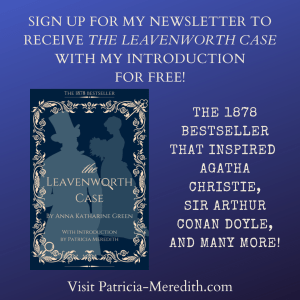How Much History is Too Much History?

What does a writer of historical fiction have in common with a writer of epic fantasy?
How much history is too much history?
It’s the same dilemma for both writers, oddly enough. For the epic fantasy writer (like my husband, Andrew Meredith), there’s always the question of spending too much time describing the world, and not enough character or plot development. For the historical fiction writer, we don’t have to create the world, but we do have to research the world as it was, and deftly introduce the reader to a past which seems almost fantastical sometimes to modern sensibilities.
One may have to research first-person accounts from the time period, and the other might have to make up the backstory, but really both have to eventually answer the question: What to include?
I may spend a full week hunting down whether in 1901 people used the phrase “dollars to donuts” while my husband may spend a full week coming up with the idioms found in a water-based culture. I may spend a happy hour reading through old newspapers only to realize at the end I’ve wasted just as much time as my husband has done figuring out the weather patterns for a world with two moons.
Connie Willis, my favorite author of all time, has actually written historical fiction books on either end of the spectrum. On one hand you have To Say Nothing of the Dog, which is more like a hilarious romp through the 1800s, complete with romance, witty banter, enough literary references to please the most intellectual bibliophile, and a plot that can really only be described as: “A time travel historian gets sent back to Victoriana to relax—mayhem ensues.”
It’s apparent Willis went to a lot of trouble to capture the unique nature of the people, places, and things of the era (I now know what a pen-wiper is, for example), while showing that really, when it comes down to it, none of these things have changed much in over a hundred years.
On the other hand, you have her Blackout and All Clear two-part series, which has so much historical detail I imagine the publishers told her she’d either have to cut enormous swathes out of the story or she’d have to divide the book in two rather than selling it as a single volume. Obviously, she chose the latter.
She must have spent years delving into every little nuance of WWII culture, and not just in London or just for the life of a shop girl, no, she covers everything from the Battle of Dunkirk to child refugees to nurses on the frontlines. I seriously cannot fathom the amount of time and effort she must have put into her research, and the pay-off is astounding.
So ultimately, when it came time for me to write my historical mysteries, I kept returning to this pendulum swing, struggling desperately to find where on the parabola I would stake my claim. For in the end, an author just has to pick where they want to be and stick to it.
More than anything, consistency is key. You’ll always have readers who prefer one end to the other. And like all things in publishing, you can’t make everyone happy. No matter what, you’ll have someone who’s not happy with you, whether it’s the reader who prefers a couple vampires running around their historical locales or the reader who’d rather you didn’t make up people when there are perfectly wonderful people who’d do just as well actually inhabiting history.
In the end, you have to ask yourself: What do I want to read?
So where have I ended up? Somewhere between To Say Nothing of the Dog and All Clear. I’ve attempted to stay closer to the “true history” side of things, incorporating as many real people, events, and locations as possible to try for that jolt of recognition. I’ve even tried to keep the language and phrases used in both dialogue and exposition strictly to those said and used in 1901 and before (I’m a bit of an etymology buff now).
But, for purposes of my book, The Butcher, the Baker, the Candlestick Taker, I’ve also introduced a full cast of characters that only exist in the 1901 Spokane in my head. And for my novel about Anna Katharine Green, only a few of the characters are made up, far more of them actually coming straight out of history.
I encourage readers to seek out those true elements found in my books, in addition to the ones listed in the appendix in the back. I had fun incorporating them, and look forward to many more research journeys into the annals of Spokane and Anna Katharine Greens’s histories.
Where do you lie on the incorporated history spectrum?
